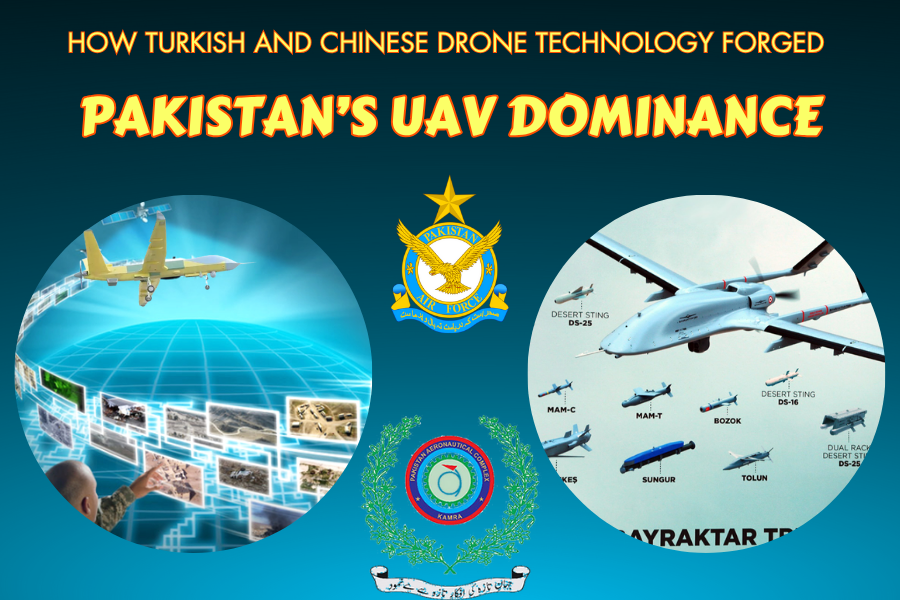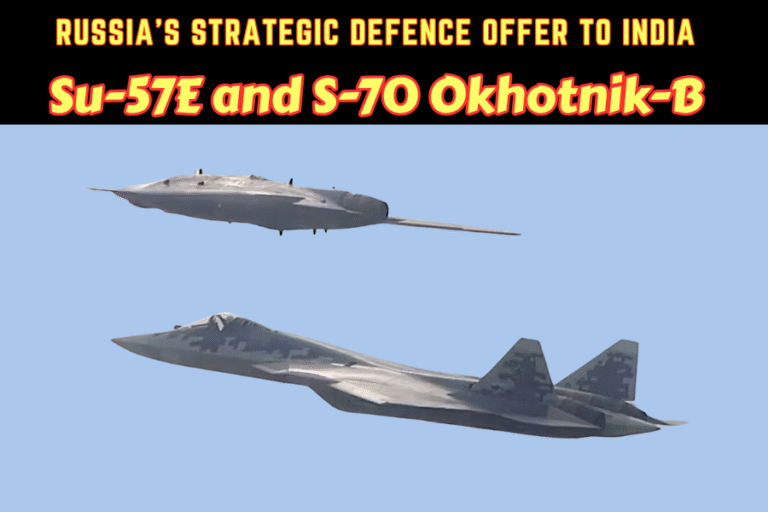(By Khalid Masood)
In the rugged terrain of Kashmir on 11 May 2025, a Bayraktar TB2 drone, cruising at 18,000 feet, pinpointed four Indian Bofors howitzers targeting Pakistani positions. Within minutes, laser-guided MAM-L munitions delivered surgical strikes, neutralising the threat. Simultaneously, a Wing Loong II, orbiting at 30,000 feet, streamed real-time imagery to the Air Operations Centre in Chaklala, exposing Indian reinforcement convoys. This coordinated operation was no fluke—it marked the pinnacle of Pakistan’s strategic pivot to become a drone superpower in South Asia. By integrating Turkish combat-proven technology and Chinese industrial scale, Pakistan has redefined asymmetric warfare, challenging India’s military dominance and reshaping regional power dynamics.
I. The Pre-Drone Era: Pakistan’s Strategic Vulnerabilities
Before its drone revolution, Pakistan’s air forces were hamstrung by reliance on foreign suppliers and restrictive export controls. From 2001 to 2018, the Pakistan Air Force (PAF) leaned heavily on a limited fleet of US-supplied MQ-1 Predators for counter-terrorism operations. However, stringent End-User Agreements and embargoes on spare parts curtailed operational flexibility. The 2019 Balakot airstrike by India exposed glaring deficiencies in Pakistan’s real-time surveillance, stand-off strike capabilities, and electronic warfare resilience. The US’s CAATSA sanctions on Turkey’s F-16 upgrades further underscored the risks of Western dependence, pushing Pakistan towards alternative partners.
“We faced a stark choice: remain tethered to Western export controls or forge a path to defence autonomy,” remarked retired Air Chief Marshal Sohail Aman. This catalyst drove Pakistan to Turkey and China, leveraging their drone technologies to bridge strategic gaps and counter India’s conventional superiority.
II. The Turkish Edge: Bayraktar TB2 – Precision Redefined
Acquisition and Customisation
Pakistan’s acquisition of 36 Bayraktar TB2 drones between 2020 and 2022, facilitated through UAE intermediaries to sidestep US pressure, marked a turning point. The TB2, developed by Turkey’s Baykar Technologies, is a medium-altitude, long-endurance (MALE) unmanned combat aerial vehicle (UCAV) renowned for its precision strikes in conflicts like Nagorno-Karabakh and Ukraine. Pakistan tailored the TB2 to its operational needs, integrating advanced systems to enhance its battlefield efficacy:
| Feature | Standard TB2 | PAF Customisation |
| Avionics | Aselsan CATS | Saab Erieye datalink for networked ops |
| Weapons | MAM-L munitions | Indigenous Burq GLBM integration |
| EW Resilience | Basic DIRCM | Chinese KG-300G jamming pods |
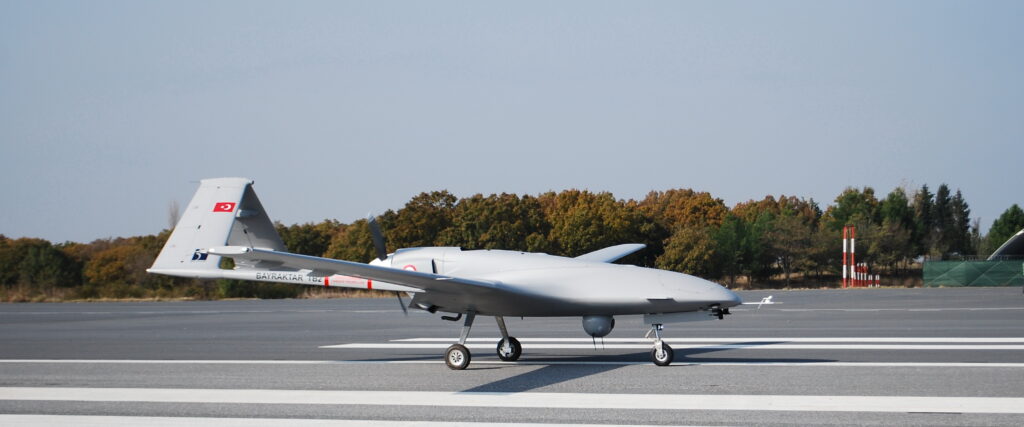
Battlefield Impact
During Operation Bunyan ul Marsoos (2025), the TB2 showcased its prowess, engaging 19 Indian artillery batteries and seven surface-to-air missile (SAM) sites with 87 MAM-L smart missiles, achieving a 93% hit rate. Its digital radio frequency memory (DRFM) jammers disrupted India’s Arudhra radars during the Srinagar offensive, while its low radar cross-section (RCS: 0.01m²) and terrain-masking tactics—honed in Syria against Russian systems—evaded India’s S-400 AD batteries at Pathankot when flying below 500m above ground level.
The TB2’s affordability ($5 million per unit) and combat record have made it a cornerstone of Pakistan’s UAV strategy, offering precision and survivability against sophisticated adversaries. Its success in neutralising high-value targets with minimal collateral damage underscores its role as a game-changer in asymmetric warfare.
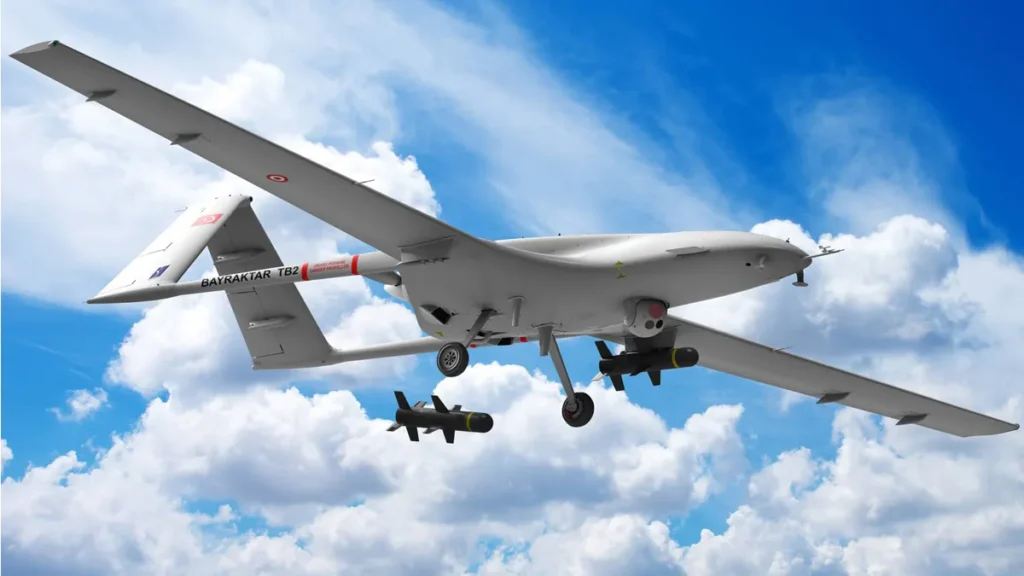
III. The Chinese Foundation: Wing Loong II – The Unblinking Eye
Strategic Integration
Pakistan’s fleet of 54 Wing Loong I/II drones, with 70% assembled at the Pakistan Aeronautical Complex (PAC) in Kamra, forms the backbone of its intelligence, surveillance, and reconnaissance (ISR) capabilities. The Wing Loong II, a MALE UCAV developed by China’s Chengdu Aircraft Industry Group, offers extended loiter times (32 hours) and advanced sensor suites, outpacing India’s Heron TP (26 hours). Its integration into Pakistan’s multi-domain operations has been pivotal:
- Maritime Dominance: Equipped with MX-20 EO/IR sensors, Wing Loong IIs maintain 24/7 patrols over Gwadar, detecting Indian Kalvari-class submarines surfacing. In 2024, targeting data from these drones enabled a successful C-802 anti-ship missile test in the Arabian Sea.
- High-Altitude ISR: With AESA radar (320 km range), the Wing Loong II tracks Indian Rafale sorties from Ambala, providing real-time situational awareness.
Scalability and Affordability
China’s supply of Wing Loong II drones, constituting 81–82% of Pakistan’s arms imports from 2019–2024, has enabled rapid fleet expansion. Local assembly at PAC Kamra reduces costs and enhances self-reliance, with each unit priced at approximately $6 million, compared to India’s $100 million MQ-9B Predators.
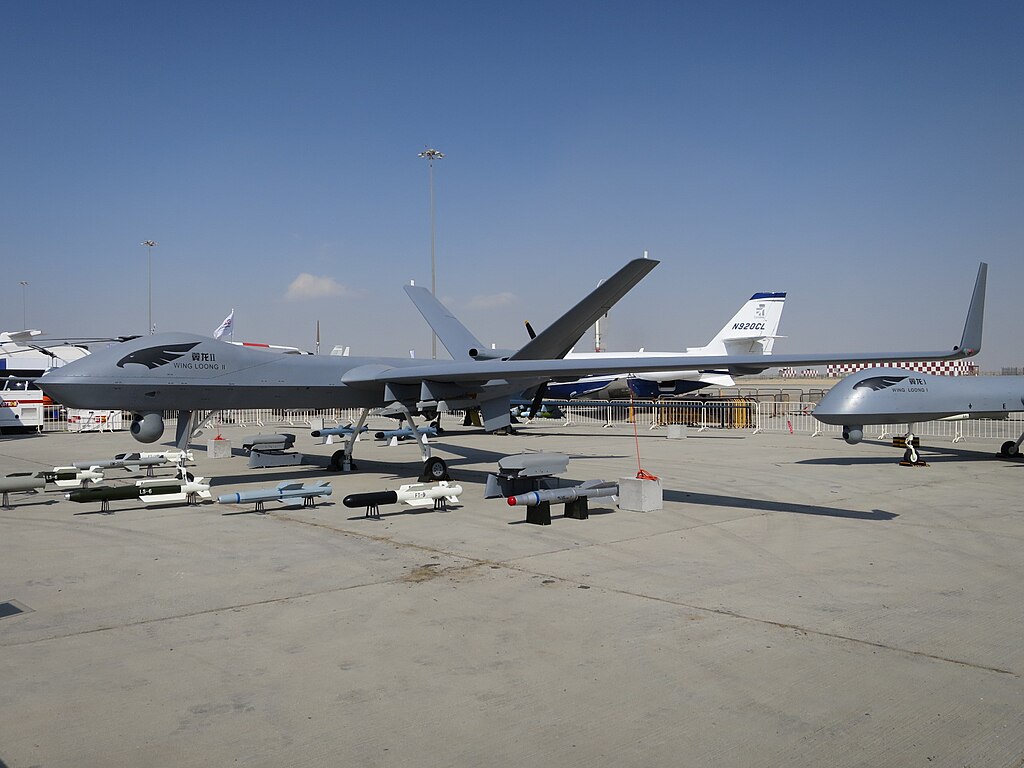
IV. The Tri-Synergy Doctrine: A Lethal UAV Ecosystem
Pakistan’s Tri-Synergy Doctrine integrates indigenous, Turkish, and Chinese platforms into a layered UAV architecture, maximising lethality and operational flexibility:
- Tier 1: Shahpar III (Indigenous)
- Role: Electronic warfare decoy (RCS spoofing)
- Altitude: 8,000–12,000 ft
- Purpose: Disrupts enemy radar and missile locks, drawing fire from high-value assets.
- Tier 2: Bayraktar TB2 (Turkish)
- Role: Precision strike
- Altitude: 15,000–18,000 ft
- Purpose: Engages targets with surgical accuracy, leveraging MAM-L and Burq munitions.
- Tier 3: Wing Loong II (Chinese)
- Role: Battlefield management
- Altitude: 25,000–30,000 ft
- Purpose: Provides persistent ISR and coordinates multi-domain operations.
AI-Driven Coordination
The Project Azm-Lab AI Core orchestrates this ecosystem, prioritising targets using data from:
- Pakistan Remote Sensing Satellite imagery
- DWL-002 passive signals intelligence
- Human intelligence networks in Kashmir
A 2024 strike in the Kargil sector exemplified this synergy: four TB2s and one Wing Loong II destroyed two Indian Bofors GH-45 howitzers and an ammunition depot in 47 minutes—compared to three hours for traditional manned strikes—demonstrating the doctrine’s efficiency.
V. Geopolitical Triumph: Sanctions Defied, Influence Amplified
A New Arms Export Hub
Pakistan’s UAV prowess has transcended domestic defence, positioning it as an emerging player in the global arms market:
- Azerbaijan Deal (2023): Sold TB2 battle data from Kashmir operations for $120 million, including training for Azeri operators at PAF Mushaf.
- Malaysian Contract (2024): A $300 million co-production deal for Shahpar III variants, with a PAC-KAI joint venture for engine maintenance.
Sanction-Proof Supply Chains
Pakistan has mitigated Western export controls by leveraging:
- Engines: Turkish TEI PD-170 (TB2) and Chinese WJ-9 (Wing Loong) bypass US ITAR restrictions.
- Satellite Comms: China’s BeiDou navigation and Turkey’s Göktürk imagery replace GPS/GLONASS, ensuring operational continuity.
“Pakistan now shapes drone warfare doctrines from North Africa to Southeast Asia, even under FATF scrutiny,” noted a London-based defence analyst. This resilience has turned sanctions into a strategic advantage, fostering partnerships with non-Western allies.
VI. Challenges and the Road Ahead
Vulnerabilities
Despite its successes, Pakistan’s UAV dominance faces challenges:
- Space Dependence: India’s PDV-MK III anti-satellite (ASAT) capability threatens BeiDou satellites, critical for Wing Loong II navigation.
- Supply Chain Risks: A 2024 Turkish engine embargo during Cyprus tensions delayed TB2 sorties, highlighting reliance on foreign components.
Future Trajectory
Pakistan is investing in next-generation platforms to maintain its edge:
| Platform | Role | Timeline | Key Tech |
| Azm Stealth UAV | Loyal wingman for JF-21 | 2028 | RAM coating, AI dogfighting |
| Burraq Mk 3 | Swarm coordinator | 2026 | 200+ drone control, mesh comms |
| Project Zarb | Counter-UAV microwave weapon | 2027 | 30kW directed energy |
VII. Conclusion: A New Calculus of Power
Pakistan’s UAV revolution, built on Turkish Bayraktar TB2 precision and Chinese Wing Loong II persistence, has redefined South Asian warfare. For under $1.2 billion, Pakistan has crafted a combat-tested drone ecosystem that rivals India’s $3 billion MQ-9B investment. This asymmetric advantage—demonstrated in strikes like Swift Retort and Bunyan ul Marsoos—has turned drones into a cornerstone of Pakistan’s deterrence strategy, as noted by retired Lt. Gen. Khalid Kidwai: “We’ve transformed the drone from a reconnaissance tool into a pillar of nuclear deterrence.”
For India, countering a foe that fights with silicon and algorithms poses a strategic dilemma. For the world, Pakistan’s model—leveraging alliances, adapting commercial technology, and prioritising integration—offers a blueprint for emerging powers. The age of drone superpowers has arrived, and Pakistan’s silent revolution is its opening salvo.
___________________________________________________________________________________________________
Sources:
- Janes Unmanned Systems Yearbook 2025
- SIPRI Arms Transfer Database (2020–2025)
- PAF After-Action Reports (2025 Kashmir Operations – Bunyan ul Marsoos) – Unclassified.
- Interview with PAC Kamra Project Director (Off-record)

